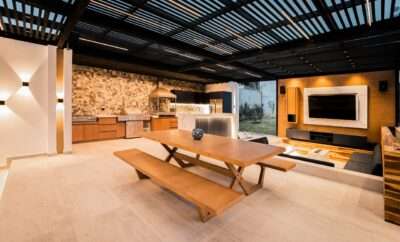
5 Trends Shaping The Future Of Architecture
5 Trends Shaping The Future Of Architecture
The field of architectural design has experienced a major revolution over the years. Developments in urban planning, as well as the introduction of new and innovative materials, paved the way for constructing buildings in ways you never thought was possible. The imagination of both architects and engineers has increased the aesthetic value of buildings. Archdaily reveals that in 2018 alone, new materials and tools have been discovered which could help determine what lies ahead for the industry. In this article, we shall take a look at 5 trends shaping shape the future of architecture.
Sustainable Designs
With traces of a growing population and climate change being felt everywhere, we can see architectural designs focusing on sustainability. This trend is already ongoing as architects and engineers aim to do their part in waste reduction efforts. In the future, we can see buildings using recyclable materials to increase the efficiency of the structure. A good example is the ‘Floating Seahorse’ residential project of the Kleindienst Group in Dubai.
Another excellent example of a building with a sustainable design is the “Hy-Fi Tower”. Winner of the Young Architects Program of the Museum of Modern Art (MoMA); the new tower will utilize a new method of bio-design using organic materials. The MoMa revealed that the Hy-Fi will be the first sizable structure to claim near-zero carbon emissions due to the fact that it was constructed from 100% compostable material.
Architects have tapped renewable energy in building projects as a way of reducing carbon emissions. Emerging architectural models utilize renewable energy sources that are capable of generating new energy.
Vertical Design
In the future, we will see buildings being built vertically instead of outwards. For people whose top priority is maximizing space, vertical living may be the best option. This trend has allowed crops to grow with less effect on the environment. Eventually, we could also see cleaner and greener cities emerging from the ground up. A good example is the Ole Scheeren Vertical Village in Singapore.
Traditional Materials
One of the fastest-growing trends in the field of architecture is the use of traditional materials like wood or even mud. Architects and engineers can draw inspiration from C.F. Moller’s timber skyscrapers, which is one of the tallest of its kind in the world. The future will also see the integration of old architectural methods such as rammed earth with smart technologies. Nowadays, we have a lot of options for construction of buildings and structures using aluminium, brick, concrete, fibre cement sheeting, glass, mudbrick, steel, cold-formed pipe, plasterboard, plastics, and more.
C.F. Moller’s structure uses cross-laminated timber panels, designed to be stronger and more fire-resistant than traditional wood. This has allowed architects to build taller buildings using timber. New methods are constantly being tested, Rammed earth is an old technique using a dirt mixture. This is the method used for building houses in Australia, South Africa, and the southwestern United States. An ultra-modern residential high rise is on the pipeline for Stockholm’s city centre in 2023.
SciFi Skylines
At the forefront of this trend is China; known for building some of the tallest and most unusual looking architectures the world has seen. A clear example of this is the Rem Koolhaas designed CCTV Headquarters. The Chaoyang Park Plaza, in Beijing, is another structure that would make you seem like stepping out of a futuristic novel.
When finished, the complex would be transformed into an urban space that creates a balance between high urban density and natural landscapes. With China headed towards urbanization and a stronger real estate industry, the market is expected to trend towards more sophisticated designs.
Virtual Reality and Digital Construction
BIM systems, modular construction, and prefabrication have made great contributions to a more productive and efficient process of construction. With 3D printing, automation, and artificial intelligence we could all foresee a future wherein construction sites will be free of humans.
Architects and engineers are starting to use virtual reality in planning and showing off new concepts to their clients. Customers can now have a walkthrough of projects in real-time and can visualize the structure even before a single stone is laid. According to trends, we can be sure that the future of interior design will be run by 3D printers. An example of this concept was introduced by Michael Hansmeyer and Benjamin Dillenburger in their project entitled “Digital Grotesque.” The two used 3D printing in an entire room that turned it into a room of the future.
Robotics and artificial intelligence will also become influential in the development of smart houses and smart cities. With automation, we could soon have solutions that will increase the quality of life and comfort in our homes.
The present dictates the future of architecture. Some of these buildings are already in the construction phase, as the great architect Frank Lloyd Wright once said, “Every architect is a great poet.” They have the ability to come up with innovative and harmonious designs that can help turn their vision into reality. These 5 trends, once it becomes a reality, can take the world of architecture to greater heights.














